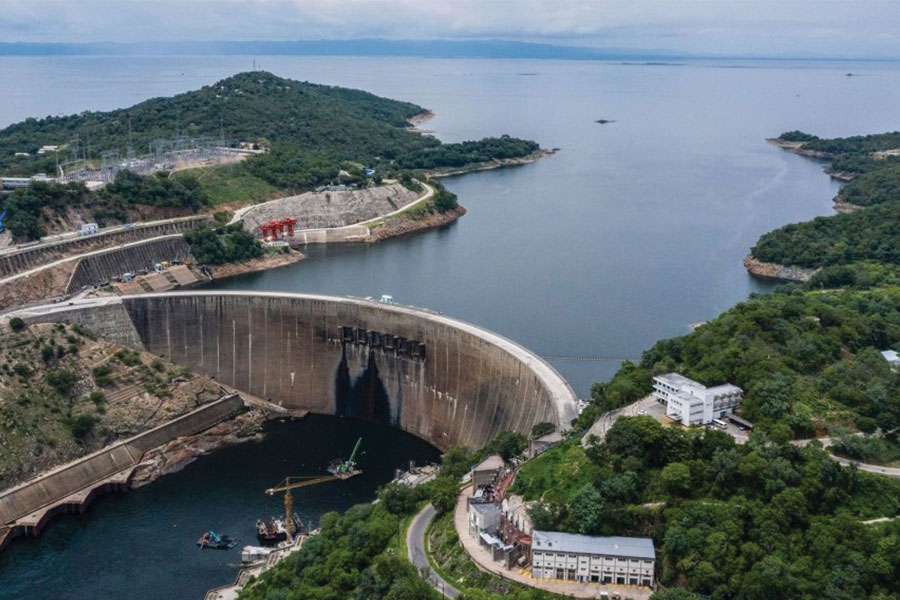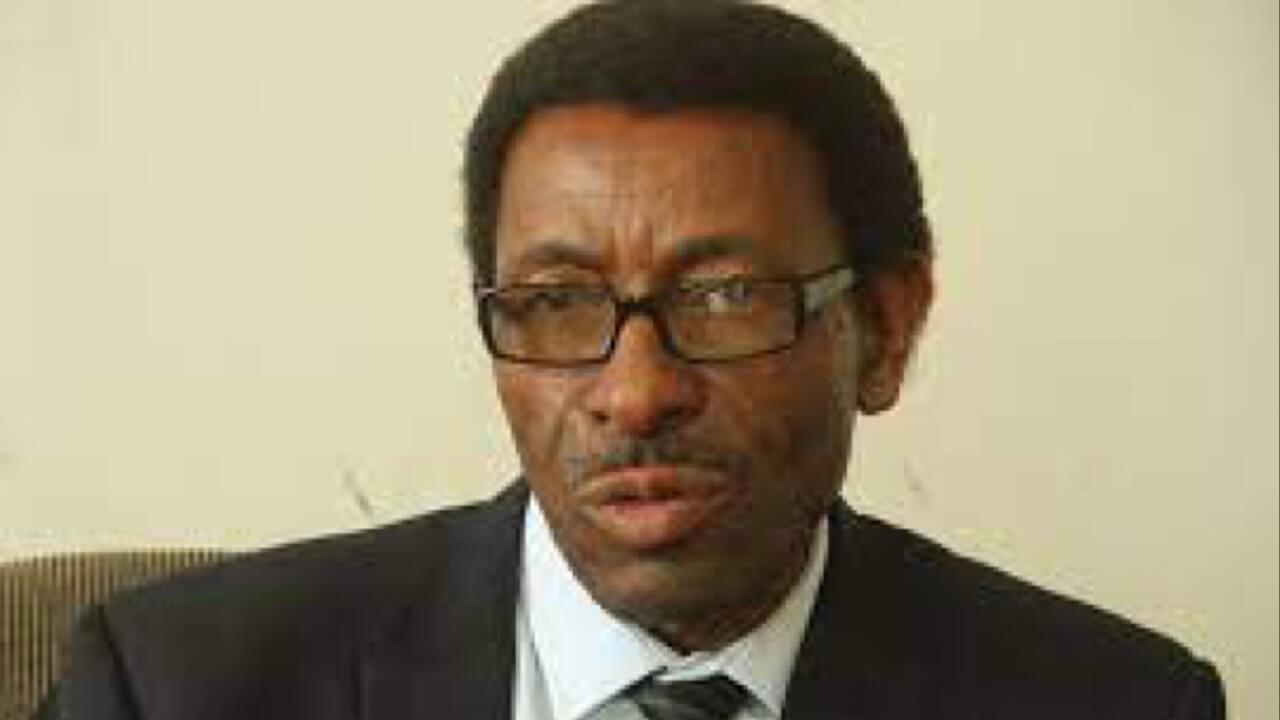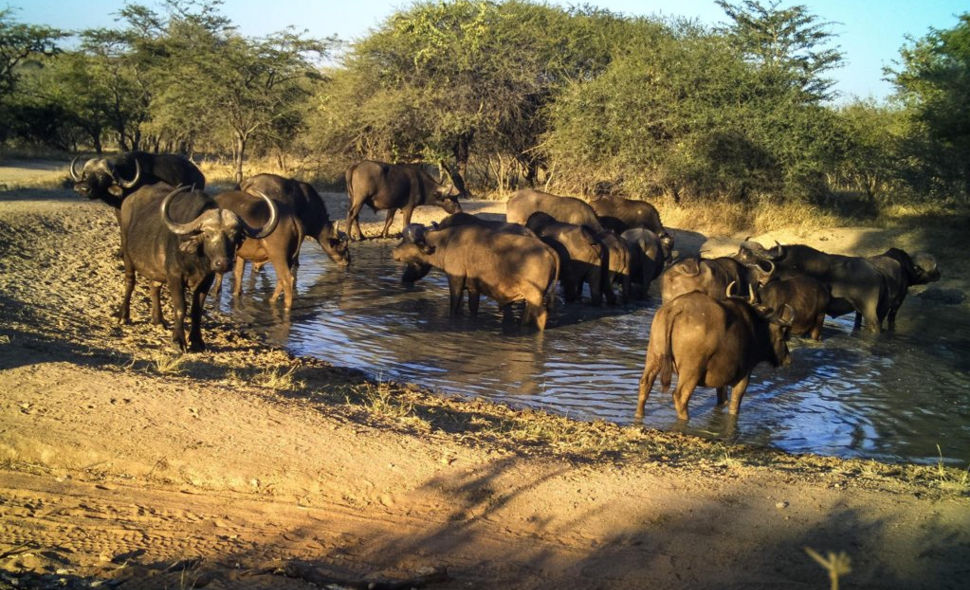Lake Kariba, the world’s largest man-made lake, stands as a testament to human engineering and its impact on the environment.
Situated on the border between Zambia and Zimbabwe, this colossal reservoir, created by the construction of Kariba Dam, has not only revolutionized electricity generation but has also become a thriving ecosystem hosting a diverse range of plant and animal species.
ALSO READ: Ralph Kahango Biography | Early Life & Education, Personal Life, Career, Culinary Aspirations
Table of Contents
ToggleName Origin

Getting To Know Kariba: Picture credit to Zimbhoo
The name “Kariba,” or “Kariva” as referred to by locals, finds its origin in a rock at the gorge entrance associated with the great river god, Nyaminyami.
According to local beliefs, Nyaminyami, a half-fish, half-snake being, resided in the rock and would bring misfortune to those who ventured too close. The name became synonymous with the dam and the lake.
Culture
The construction of the Kariba Dam stirred concerns about the inundation of vast areas, loss of habitats, and the relocation of local villages.
Despite these challenges, the authorities believed that the benefits of the dam, including hydroelectric energy, outweighed the losses.
The locals’ deep connection to Nyaminyami and their attribution of construction setbacks to divine displeasure reflect the cultural significance of the region.
ALSO READ: Marondera: A Comprehensive Guide to Zimbabwe’s Historic Town
History of Nyami Nyami
The history of Nyaminyami, the Zambezi River God, is deeply entwined with the lives of the Tonga people for centuries. Here’s a glimpse into his rich legend:
Origins and Role:
- Guardian of the Zambezi: Nyaminyami is believed to be a serpent-like creature, inhabiting the Zambezi River and wielding supernatural powers. He’s seen as the protector of the Tonga people, ensuring their water supply, fertility of the land, and fishing bounty.
- Residing in Kariba Gorge: Before the construction of the Kariba Dam, Nyaminyami resided in the Kariba Gorge, a sacred place for the Tonga. Many believed he dwelled under a rock called Kariwa, which gave the present-day lake its name.
Relationship with the Tonga:
- Offerings and Rituals: The Tonga people worshipped Nyaminyami through offerings and rituals. They performed ceremonies to appease him, seeking his blessings for good harvests, safe passage on the river, and protection from misfortune.
- Oral Traditions: Stories and songs passed down through generations kept Nyaminyami’s legend alive. These tales described his powerful presence, his kindness towards the Tonga, and his wrath if disrespected.
The Impact of Kariba Dam:
- Disruption and Anger: The construction of the Kariba Dam in the 1950s disrupted Nyaminyami’s abode and separated him from his wife. The Tonga believed this angered him, attributing the floods and fatalities during construction to his displeasure.
- Submerged Kariba Gorge: With the creation of Lake Kariba, the Kariba Gorge submerged, marking a shift in Nyaminyami’s presence. Some believe he retreated deeper into the lake, while others claim he left the Zambezi altogether.
Nyaminyami’s Legacy:
- Modern Significance: Although the physical landscape changed, Nyaminyami’s influence remains strong among the Tonga people. He continues to be a symbol of their cultural identity, connection to the land, and respect for the environment.
- Conservation Efforts: The belief in Nyaminyami serves as a natural safeguard for the Zambezi River and its ecosystem. Protecting the river is seen as honouring the River God and ensuring his continued blessings.
Nyaminyami’s story highlights the complex relationship between humans, nature, and the spirit world. He is a testament to the enduring power of oral traditions, the connection between communities and their environment, and the lasting impact of historical events on cultural beliefs.
ALSO READ: Exploring Bindura: A Comprehensive Guide to the Heart of Mashonaland Central
Kariba Dam Construction

Getting To Know Kariba: Picture credits to Zimbhoo
Initiated in 1956, the construction of Kariba Dam was a massive undertaking.
Designed by the renowned French dam specialist Andre Coyne, the dam aimed to provide hydroelectric energy to Zambia and Zimbabwe.
Despite concerns about habitat loss and village relocations, the dam’s completion in 1959 marked a milestone in power generation in the region.
Technical Specifications
- Height: 420 ft.
- Length: 1,900 feet
- Base Width: 105 feet
- Crest Width: 30 feet
- Reservoir Surface Area: 5,400 square kilometers
- Reservoir Capacity: 185 billion cubic meters
- Electricity Generated: 6,700,000,000 KW
Greatest Disaster
The construction of the Kariba Dam had ecological and societal consequences. Operation Noah, a large-scale animal rescue mission, aimed to mitigate the impact on wildlife.
However, the dam’s construction also led to the sacrifice of numerous animals and raised concerns about its environmental footprint.
Construction-related tragedies: The construction of the Kariba Dam in the 1950s was a monumental undertaking, but it also came with a tragic cost.
Over 120 workers lost their lives during construction, primarily due to accidents and harsh working conditions. This loss of life left a deep mark on the communities involved in the project.
Displacement of the Tonga people: The creation of Lake Kariba flooded the Kariba Gorge, the ancestral homeland of the Tonga people.
Over 50,000 Tonga were displaced from their homes and villages, resulting in significant cultural and social disruption.
While they were resettled in other areas, the loss of their traditional way of life and connection to the land remains a sensitive issue.
3. Floods and evacuations: In 2008 and 2010, heavy rainfall led to rising water levels in Lake Kariba, threatening to overtop the dam.
To prevent a potential dam failure, controlled releases of water were necessary, causing flooding downstream and forcing the evacuation of thousands of people living in the floodplain.
Places To Visit

Getting To Know Kariba: picture credit to ZWkhatha
Wildlife and Nature
Lake Kariba has become a haven for wildlife enthusiasts. The surrounding areas, including Matusadona National Park, Islands of Kariba, and Chete safari area, offer opportunities for safaris, bird watching, and wildlife viewing. The region’s rich biodiversity attracts thousands of visitors each year.
Cultural Attractions
Binga and Siavonga towns in Zambia and Zimbabwe host cultural attractions and guided tours, providing insights into the history of the dam and the displaced Tonga people.
Kariba: This town is steeped in history and culture, with a variety of attractions to explore. Visit the Kariba Dam, a marvel of engineering that created Lake Kariba, or learn about the Tonga people at the Kariba Museum.
Lodges
Kariba offers a fantastic range of lodges to suit any taste and budget, from luxurious safari retreats to laid-back campsites.
Luxury:
- Bumi Hills Safari Lodge: Perched on a granite kopje overlooking the lake, this award-winning lodge offers stunning views, elegant accommodations, and exceptional service.
- Changa Safari Camp: This intimate camp on Changa Island provides a traditional safari experience with luxurious touches, like private plunge pools and open-air showers.
- Rhino Safari Camp: Located on a peninsula, this eco-friendly camp offers exclusive access to a private wildlife reserve and breathtaking landscapes.
Mid-range:
- Warthogs Bush Camp: This friendly and affordable camp is perfect for families and groups, with a swimming pool, games room, and a variety of activities.
- Sunset Lakeview Lodge: This family-run lodge offers comfortable accommodations, stunning lake views, and a relaxed atmosphere.
- Fothergill Island Lodge: This island lodge is a great option for those seeking a peaceful escape, with comfortable cabins, delicious food, and plenty of opportunities for fishing and birdwatching.
Budget-friendly:
- Kariba Safari Lodge: This basic lodge is a good option for budget-conscious travellers, with shared facilities and proximity to the town of Kariba.
- Kariba Houseboats: Stay afloat on a self-catering houseboat and enjoy the unique experience of exploring Lake Kariba at your own pace.
- Camping: Kariba offers several campsites with stunning locations and basic amenities. This is a great option for nature lovers who want to get back to basics.
ALSO READ: Exploring Rusape: Culture, Climate, and Historical Significance
Geographical Location
The Kariba Dam sits on the mighty Zambezi River, right on the border between Zambia and Zimbabwe! Its location in the Kariba Gorge makes it a crucial point on the map of both countries. Here are some specifics to solidify its position:
- Latitude and Longitude: The centre of the dam falls roughly at approximately -16.2167° S, 28.3500° E.
- Region: It sits within the Southern Africa region, nestled in the heart of the Zambezi basin.
- Countries: As mentioned earlier, the dam forms a natural border between Zambia and Zimbabwe, with each country having its powerhouse station on either side.
- Cities: The nearest towns are Kariba in Zimbabwe and Siavonga in Zambia, both flourishing as tourist destinations due to their proximity to the magnificent Lake Kariba created by the dam.
Situated halfway down the Zambezi River, approximately 81 miles southwest of Zambia’s capital Lusaka, Lake Kariba spans the border between Zambia and Zimbabwe.
The coordinates are 16.9557 degrees south latitude and 27.9718 degrees east longitude.
Fishing and Wildlife Relationship
Lake Kariba’s unique ecology, enriched by decomposed vegetation during its initial filling, has led to a thriving habitat for various fish species.
Tigerfish, kapenta fish, and other aquatic life make the lake a hotspot for fishing enthusiasts.
The region’s conservation measures have contributed to the coexistence of diverse wildlife, including elephants, lions, leopards, and hippos.
Trivia
- Buffer Pool Mechanism: Recent controversies surrounding the Kariba REDD+ Project have brought attention to the integrity of the buffer pool mechanism. The buffer pool, designed to support Agriculture, Forestry, and Other Land Use (AFOLU) projects, has demonstrated resilience even in unique and extraordinary situations.
Can You Swim In Lake Kariba?
While there is no legal prohibition against swimming in Lake Kariba, caution is advised due to the presence of hippos, crocodiles, and potential waterborne infections.
Visitors are urged to be aware of the risks associated with swimming, given the diverse wildlife inhabiting the lake.
References
- Verra Statement on Kariba REDD+ Project – Verra, 27 October 2023
- Zambia, Zimbabwe to Get Record Low Water Allocation for Power from Lake Kariba – Bloomberg, 20 December 2023
- The Largest Man-Made Lake in the World Is Infested with Crocodiles and Hippos – A-Z Animals, 25 October 2023



